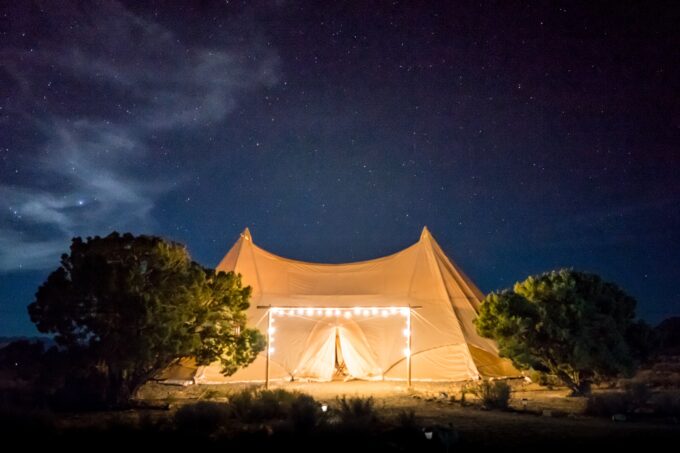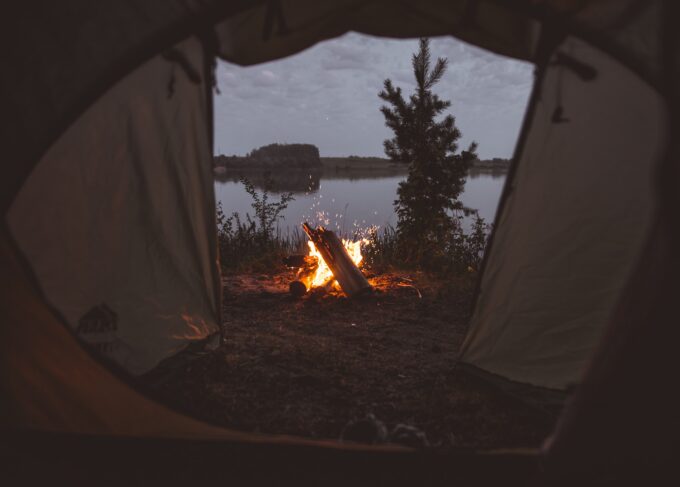Tents are a great way to spend the night outdoors. Whether you’re camping with friends, spending time on a family vacation, or hiking in the wilderness – tents provide shelter and security while facilitating an enjoyable outdoor experience. But there are so many different types of tents! How do you know which one is best for your needs?
This blog post will help you make that decision. We’ll explore ten handy tips to make sure that when you buy a tent, it’s the right fit for your lifestyle and budget. To know more about how you can get the most of your next camping excursion, take a peek at camping.org.
1. Ease of Use

img source: unsplash.com
If you’re looking for a lightweight and compact option, an ultralight tent is right up your alley. They provide little protection from the elements but are easy to transport in their small carrying bag. If you need more room or want to be able to walk around inside, take a look at cabin tents. Some people also like trekking tents because they can withstand harsh weather conditions while still being relatively lightweight. Consider how much room you need before investing in an ultralight tent that provides little protection against the elements but is easy to transport because of its small carrying bag.
2. Think about the price
Make sure that when looking at prices that they include everything so there are no hidden fees. For example, confirm that the price includes all of the poles and stakes. Make sure about what it is made of. Tents made of low-cost/inferior materials tend to be on the cheaper side. Additionally, look at tents designed to be waterproof as this will save you from any additional costs to keep your tent dry or water-resistant. You don’t want condensation dripping onto your head while camping during a humid summer night or early morning hours—so invest in waterproofing.
3. Ensure the tent comes with a rainfly

img source: unsplash.com
Most tents come with a rain fly which is used to keep water out of the tent, and many have an attached vestibule space that can be used for storing gear or cooking without letting bugs in.
4. Pay attention to the ventilation
Many models are also ventilated, so you’ll stay cool during those warmer days when it might get too hot inside due to all the sun exposure; this reduces condensation as well! So if you want some fresh air but think your sleeping bag will start feeling moist from all the humidity, then definitely consider investing in one of these handy little features. Because not only do they provide ventilation, but there’s less chance someone will wake up sweaty during the night. Some tents even have electric hookups for charging your phone, tablet, laptop, or other electronic devices.
5. Choose a size that suits your needs

img source: unsplash.com
If you are camping alone, then one person might suffice, but more people in your group then find a tent large enough for everyone, so they don’t feel cramped inside. Consider how much space would suit each individual’s personal belongings, such as clothes, sleeping bags, and even bedding; make sure not to forget anything! If there are children involved with choosing a tent, choose something like an activity-filled family tent built to entertain them and make their time camping all the more enjoyable.
6. Keep an eye on how often you will be using your tent
If it’s for just a few trips, then consider buying something cheaper as most tents are expensive but if you plan to use it many times over, then look at investing in a high-quality model which should last much longer than those low-priced ones would. The investment might pay off when considering the cost of replacement parts or even hiring someone else to put up and take down your tent each trip too. It doesn’t matter what the weather forecast says; always pack some rain gear with you, such as waterproof jackets, ponchos, and even umbrellas, so that everyone can stay dry no matter whether it’s raining or snowing.
7. Look for a tent that is easy to assemble

img source: unsplash.com
Every tent is different, so it’s important to read the instructions before setting up your new one after you’ve purchased it. A good indication of quality can be seen by how easy setup and takedown is for a particular model. If they’re difficult, there may be too many complicated features that make this daunting task harder than intended – in which case you should look for something simpler instead (or just return/exchange). Also, pay attention to what parts come with a given model as some tents include everything while others only have poles and stakes included without any extra equipment like rain flies. This might not seem like an issue at first, but when it starts raining unexpectedly, you’ll regret having paid less money even more if you realize that your tent won’t be able to keep the water out.
8. Don’t forget the flooring of your tent
You may not need it if the tent is used in a camping site with no floor, but you will need a ground tarp for protection on other surfaces. Ensure the flooring of the tent you’re considering buying is durable enough to withstand the ground you will be using it on and that adequate ventilation is provided. You may also want to consider bringing a ground tarp with you when camping in an area where bugs are known to inhabit for protection against their bites or stings. You can use your tent as shelter if necessary during a storm by ensuring all openings are sealed off; make some holes or gaps smaller than others, so air circulates while still blocking rainwater from entering.
9. Don’t forget about insulation

img source: unsplash.com
Insulate yourself from the elements inside of your tent, especially in winter months, by purchasing extra blankets and turning up the thermostat within. No matter what type of sleeping bags you bring with you into the wilderness (or how well they’re made, chances are you’ll be better off with an extra layer of protection when you’re trying to sleep.)
10. Consider the additional Features
Tents come with many different features as well! Tent poles make setup easier by breaking down into smaller lengths that allow someone of any height to put it together easily – consider this if you have back problems or don’t feel comfortable kneeling on the ground before setting up your shelter. Mesh walls help keep bugs out and provide ventilation to keep you from getting hot and sweaty during the night. Some tents even have electric hookups for your phone, tablet, or laptop – making it a good choice if you’re camping with kids. Tent poles make setup easier by breaking down into smaller lengths allowing someone of any height to put it together easily – consider this if you have back problems or don’t feel comfortable kneeling on the ground.
Ideally, the tent should have two entrances so that people can enter and exit from either side to avoid congestion in one entrance. This leads to a lot of frustration when there is just an inch or less between you and another person entering the tent at the same time.
Make sure your carrying case for transporting it has wheels on; not only does this make transportation easier but also protects your tent during transport too. Remember: never use any kind of gas lantern inside a closed-in area such as your tent because they produce enormous amounts of poisonous carbon monoxide (CO). If using electrical lights, be careful about making them waterproof by sealing around where the cord enters with silicone sealant, if possible, before plugging them into a power source like a generator or outlet.
We hope you found this article helpful and that it helped make your tent buying decision a little easier. Which of these hand-picked tents are you considering for purchase?







